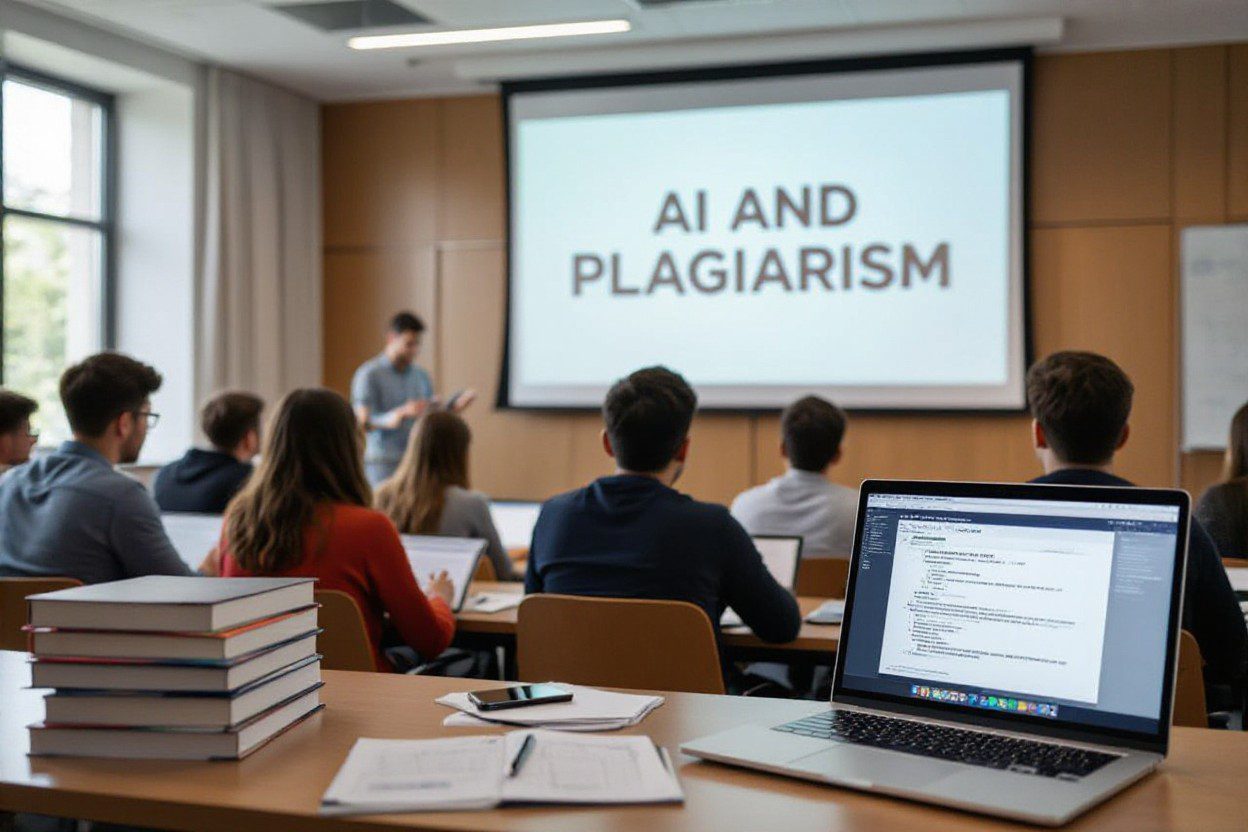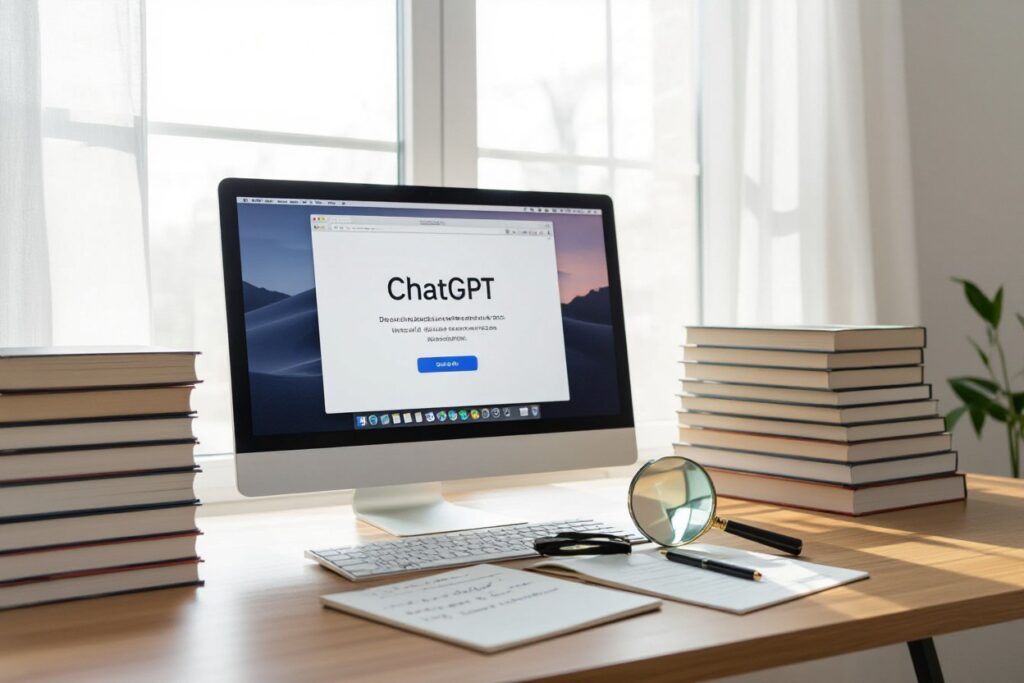There’s a growing curiosity about whether content generated by ChatGPT is entirely free from plagiarism. As I explore this topic, I want to help you understand how the AI creates text and what safeguards exist to ensure originality. While ChatGPT produces human-like responses, the question of absolute plagiarism-free content involves nuances that are important for anyone relying on this tool. In this post, I’ll share insights on how ChatGPT works and what you should consider to maintain the integrity of your work. Let’s dive in and clarify your concerns about AI-generated content and plagiarism.
The Mechanics of ChatGPT: How It Generates Content
ChatGPT creates responses by predicting the most likely sequence of words based on input prompts, leveraging a complex architecture of algorithms. This process hinges on its ability to identify patterns and relationships in vast amounts of text data, allowing it to produce relevant and coherent content. Understanding these mechanics sheds light on the model’s strengths and the inherent limitations that influence the originality of its output.
Language Modeling and Neural Networks
At the core of ChatGPT lies a neural network trained as a language model, designed to anticipate what comes next in a string of words. Its transformer architecture excels at processing and generating human-like text by analyzing context across hundreds of tokens simultaneously. This architecture enables it to synthesize information fluidly, but it does so by blending learned patterns rather than retrieving verbatim text from its training data.
The Role of Training Data
ChatGPT’s outputs depend heavily on the extensive datasets it’s trained on, which include books, websites, and articles totaling hundreds of gigabytes of text. This diverse input helps the model understand language nuances but also introduces a mix of original and replicated patterns. While it doesn’t copy exact phrases intentionally, it can generate content resembling its training examples, affecting the originality and perceived plagiarism risk.
The training data’s breadth spans multiple domains, reflecting billions of sentences and phrases acquired up to 2023. Diversity in sources—ranging from technical manuals to social media—allows ChatGPT to mimic various writing styles. However, since it assimilates rather than consciously references these texts, some generated content may inadvertently mirror parts of its input data, making full plagiarism-free assurance a challenge depending on usage context and prompt specificity.
Plagiarism Defined: What It Means in the Digital Age
Plagiarism today extends beyond mere word-for-word copying. In the digital age, it encompasses unauthorized use of ideas, data, or content presented as original work without proper attribution. With the explosion of online content and AI-generated text, distinguishing between inspiration, collaboration, and outright plagiarism becomes complex. The ease of accessing and remixing vast amounts of data means that plagiarism can be intentional or inadvertent, making strict scrutiny necessary in education, publishing, and professional fields alike.
Legal Standards versus Ethical Considerations
Legal standards for plagiarism hinge on copyright infringement and intellectual property laws, which protect original works but vary by jurisdiction. However, ethical considerations often go beyond legality, encompassing honesty and academic integrity. You might encounter situations where text is legally permissible to reuse yet ethically questionable without acknowledgment. This gap means users must navigate both the letter of the law and the spirit of ethical practice when evaluating content originality, especially with AI-generated outputs that blend existing knowledge.
The Spectrum of Originality in AI-Generated Content
AI responses exist on a spectrum from fully original compositions to heavily derivative texts that recombine existing materials. Algorithms like ChatGPT generate content by predicting likely phrases based on trained data, which includes countless documents already published online. While the output is unique in phrasing, the underlying ideas often reflect synthesized information, creating a gray zone between originality and replication. This challenges any strict binary classification of AI content as purely original or plagiarized.
Understanding this spectrum requires analyzing how AI produces text: it doesn’t memorize but rather assembles probable continuations of input prompts drawn from patterns in its training data. For example, AI might generate a paraphrased explanation of a scientific concept found in public datasets, resulting in text that doesn’t appear elsewhere word-for-word yet conveys familiar knowledge. This form of originality doesn’t mimic human creativity but follows statistical likelihoods, raising questions about how to fairly credit AI-generated work while respecting existing sources.
ChatGPT’s Approach to Content Creation: An Originality Assessment
While ChatGPT generates text based on a vast dataset, its output reflects a complex interplay between pre-learned patterns and novel synthesis. The responses blend existing knowledge with unique phrasing and context-driven adaptations, which means the resulting content straddles the line between reproducing information and crafting something inherently original. By analyzing how the model utilizes language structures and factual data, I can better appreciate the extent to which ChatGPT balances reuse with innovation.
Patterns and Reuse of Information
The model often employs common linguistic patterns and frequently encountered facts when producing text, leading to overlapping phrases or concepts seen elsewhere. For example, descriptions of historical events or scientific principles inevitably reflect standard explanations learned during training. This reuse does not equate to verbatim copying but demonstrates how language models rely on recurring structures to maintain coherence and accuracy, especially in well-covered topics where precise information delivery is imperative.
Unique Contextualization and Adaptation of Ideas
Despite drawing from similar data points, ChatGPT adapts information dynamically by tailoring responses to the specific prompts and user intent. This contextualization allows new combinations of ideas and fresh perspectives rather than mere replication. For instance, when asked about niche applications of a concept, the model reassembles relevant facts in uncommon ways, showcasing the potential for creative rephrasing and synthesis that lends an original quality to generated content.
Digging deeper into unique contextualization, I see that ChatGPT leverages its training to identify subtle nuances in your queries, adjusting tone, examples, and depth accordingly. This approach means it doesn’t just regurgitate stored text chunks but reinterprets information through the lens of your question. For example, explaining quantum computing for a casual audience versus a specialized researcher results in distinctly styled outputs grounded in the same core knowledge yet tailored distinctly, enhancing both relevance and originality in each case.


Real-World Implications: The Consequences of AI-Driven Content
The rise of AI-generated content challenges how originality and authenticity are perceived across industries. With tools like ChatGPT producing large volumes of text rapidly, content saturation can dilute unique voices and complicate fact verification. Companies might rely too heavily on AI for marketing or media production, risking generic outputs that lack human insight or emotional depth. Meanwhile, academic institutions face difficulties in discerning genuine student work, prompting shifts in evaluation methods. These ripple effects highlight the complex balance between harnessing AI’s efficiency and preserving creative integrity.
Impacts on Writers and Content Creators
Writers confront a transformed landscape where AI-assisted drafting accelerates workflows but also heightens competition. The ease of generating content may push creatives to deepen their personal style or expert knowledge to stand out. Freelancers might find certain assignments replaced by AI outputs, compelling them to adapt by offering more nuanced, research-driven, or editorial services. The challenge lies in blending AI’s capabilities with authentic craftsmanship to maintain relevance and marketability.
The Evolving Landscape of Copyright and Plagiarism
Copyright frameworks struggle to address AI-produced content, often lacking clear guidelines on ownership and infringement. Questions arise about the originality of AI-generated text since it draws from existing human-created data without direct attribution. Legal cases are starting to explore these grey areas, influencing how policies might evolve to protect both creators and users in this new paradigm.
Delving deeper, courts and policymakers grapple with definitions of authorship as generated content blurs lines between human and machine input. For example, the United States Copyright Office currently does not recognize works created solely by non-human agents, complicating claims for AI-generated material. Meanwhile, international directives, such as the EU’s approach to digital content, consider the originality and creative effort involved, opening discussions about adapting laws. These ongoing debates shape how plagiarism detection evolves and how responsibility for AI content is assigned, demanding vigilance from all stakeholders as technology progresses.


Best Practices for Utilizing ChatGPT While Avoiding Plagiarism
Maximizing ChatGPT’s potential requires thoughtful interaction, balancing AI-generated input with your original ideas. Use the tool to draft, brainstorm, or reframe concepts, then refine and customize the output with your voice and insights. Incorporating multiple sources and running AI content through plagiarism detection software enhances originality. Setting clear goals before prompting ChatGPT helps steer responses away from generic or derivative content. By taking these steps, you maintain integrity while benefiting from the efficiency and creativity that AI offers.
Ensuring Transparency and Attribution
Disclosing when content originates from AI models like ChatGPT increases trust and ethical clarity. Whether presenting research, drafting reports, or creating marketing material, noting the contribution of AI in footnotes or acknowledgments aligns with academic and professional standards. For example, citing ChatGPT as a source in research papers or including disclaimers in blog posts prevents misleading readers about the authorship. Openly attributing AI assistance promotes responsible use and helps audiences discern human insight from machine-generated suggestions.
Integrating Human Oversight in the Creative Process
Although ChatGPT can generate coherent and contextually relevant content, human oversight remains key to ensuring quality and originality. Editing AI drafts to inject your perspective, verifying facts, and adjusting tone helps avoid inadvertent plagiarism and maintains your authentic voice. This combination of AI assistance with human judgment produces polished, trustworthy outputs that reflect your expertise rather than just replicating existing material.
Extending this oversight involves iterative review cycles where each AI-generated draft undergoes critical examination and substantial modification. For example, when composing client proposals based on ChatGPT suggestions, I cross-check industry-specific terminology and customize messaging to resonate with target audiences. This layered approach harnesses AI speed and versatility without sacrificing the nuanced understanding only a human can provide, effectively minimizing plagiarism risks while enhancing content value.
To wrap up
Upon reflecting on whether ChatGPT is 100% plagiarism free, I understand that while the AI generates original responses based on extensive training data, it can sometimes produce content that closely mirrors existing texts. I advise you to always verify and customize the AI’s output to ensure authenticity and avoid unintended plagiarism. Using plagiarism detection tools alongside critical review will safeguard your work’s integrity and originality when relying on ChatGPT for your content needs.

